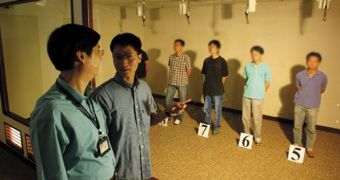A one-way mirror is basically just like any other mirror, just that it has the ability of reflecting light on one side while on the other, it is transparent. Typical mirrors achieve a high degree of reflectiveness on one side, leaving the reverse opaque to optical light. This is done by covering the glass layer with a silvered coating. One-way mirrors, however, use half silvered surfaces in order to achieve a balance between reflectiveness and transparency, in combination with carefully adjusted amounts of light.
Practically, the silvered coating is only half of that of a typical mirror, meaning that it reflects half of the incoming light, leaving the other half pass right through. The concept is relatively similar to that used in lasers. Inside a laser, photons of light are being bounced between two mirrors, one with 100 percent reflectiveness and the other with 99 percent. As they travel between the two mirrors, the photons gather more and more energy, until they are sufficiently energetic to penetrate the mirror with 99 percent reflectiveness and exit on the other side in the form of a high concentrated beam of light.
Lighting is critical while using one-way mirrors. The room facing the reflective surface must always be brightly lit so that enough light penetrates the other side. On the other side however, light must be adjusted to a minimum, as there is always the risk that criminals see the witnesses - in the particular case when one-way mirrors are used during suspect questioning. The situation is somehow analogue to that of a couple of people whispering in a room while, in another, loud music is played. The persons present in the room where loud music is played will never hear what the others are whispering in the next one.
One-way mirrors can be disabled by turning off the lights in the room facing the reflective surface, and enhancing the light intensity in the other. In this case, people standing on either side of the mirror would be able to see each other. You might have observed the effect on public buildings having one-way mirrors posing as windows. During day time, a person standing outside would only see his reflection, but when night falls, one can see clearly inside the building - if the lights are on, of course.

 14 DAY TRIAL //
14 DAY TRIAL //